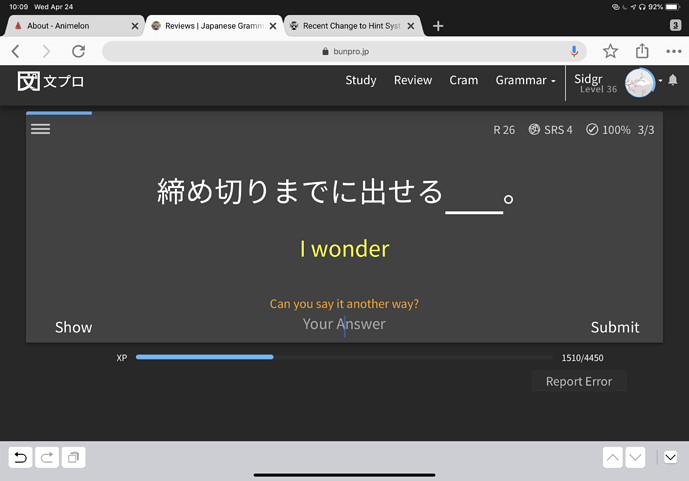I was doing my reviews today and noticed that the part of the hint that is placed in brackets e.g. [polite-passive] didn’t show up right away, and also was the last hint to be revealed after the focus grammar and even after the full sentence.
This completely defeated the point of Bunpro for me. I can understand it not being revealed right away. But if I have to reveal the entire sentence to disambiguate what the question really is asking me, I have been denied the chance to fully understanding the sentence with no English.
I am not sure why this change was made, and if it became a configurable option I would be happy, as if some feel this way works for them that is good. But as a long time user I was very frustrated with this change.
Examples of when this type of hint is very useful. Every situation involving any word that roughly relates to [seems/appears/etc.] as all of these types of words denote a certain quality of confidence and nature of the evidence Being evaluated that is necessarily embedded in context and one cannot parse from the English focus grammar hint alone. This means that I either have to brute force the sentence which is a bad idea or I to guess each possible option, or I have to reveal the entire sentence before I even attempt to understand the the Japanese in Japanese.
Regards,
Sid





